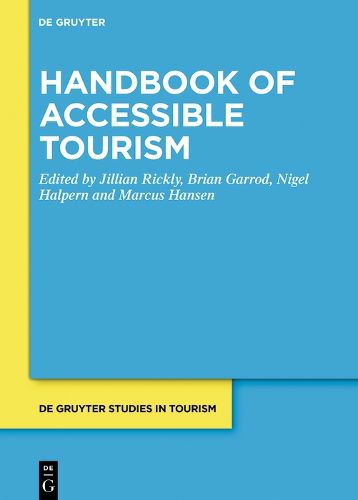Readings Newsletter
Become a Readings Member to make your shopping experience even easier.
Sign in or sign up for free!
You’re not far away from qualifying for FREE standard shipping within Australia
You’ve qualified for FREE standard shipping within Australia
The cart is loading…






The Handbook of Accessible Tourism is a crucial resource addressing the need for accessibility in the tourism industry, offering insights, theoretical foundations, and practical strategies to make tourism more accessible.
Combining conceptual and empirical work, the handbook spans various components of the tourism system, considers the experiences of people with different accessibility requirements, and covers a range of geographical settings. It identifies gaps in current knowledge and provides recommendations for future research and innovation, encouraging continuous improvement in accessible tourism.
Featuring 35 chapters, the handbook is organised into three parts:
Foundations of accessible tourism: explores the evolution of accessible tourism; integrates concepts like leisure constraints theory; covers institutional frameworks, sustainability, information and communications, functionality, disability mobilities, support for carers and friends, and human-animal relations.
Accessible destinations and tourism experiences: examines practical aspects of making tourism accessible, emphasising interdisciplinary collaboration, stakeholder engagement, and universal design; includes case studies highlighting challenges, opportunities, and the role of technology.
Designing for accessibility: focuses on making tourism accessible through universal design, transition design, cognitive work analysis, service design, technology, and stakeholder collaboration; addresses the needs of different groups, specific tourism sectors, and the importance of education and training.
Crucial resource addressing the need for accessibility in the tourism industry Offers insights, theoretical foundations, and practical strategies to make tourism more accessible Combines conceptual and empirical work that spans various components of the tourism system Considers the experiences of people with different accessibility requirements, and covers a range of geographical settings Includes case studies highlighting challenges, opportunities, and the role of technology Identifies gaps in current knowledge and provides recommendations for future research and innovation, encouraging continuous improvement in accessible tourism
$9.00 standard shipping within Australia
FREE standard shipping within Australia for orders over $100.00
Express & International shipping calculated at checkout
The Handbook of Accessible Tourism is a crucial resource addressing the need for accessibility in the tourism industry, offering insights, theoretical foundations, and practical strategies to make tourism more accessible.
Combining conceptual and empirical work, the handbook spans various components of the tourism system, considers the experiences of people with different accessibility requirements, and covers a range of geographical settings. It identifies gaps in current knowledge and provides recommendations for future research and innovation, encouraging continuous improvement in accessible tourism.
Featuring 35 chapters, the handbook is organised into three parts:
Foundations of accessible tourism: explores the evolution of accessible tourism; integrates concepts like leisure constraints theory; covers institutional frameworks, sustainability, information and communications, functionality, disability mobilities, support for carers and friends, and human-animal relations.
Accessible destinations and tourism experiences: examines practical aspects of making tourism accessible, emphasising interdisciplinary collaboration, stakeholder engagement, and universal design; includes case studies highlighting challenges, opportunities, and the role of technology.
Designing for accessibility: focuses on making tourism accessible through universal design, transition design, cognitive work analysis, service design, technology, and stakeholder collaboration; addresses the needs of different groups, specific tourism sectors, and the importance of education and training.
Crucial resource addressing the need for accessibility in the tourism industry Offers insights, theoretical foundations, and practical strategies to make tourism more accessible Combines conceptual and empirical work that spans various components of the tourism system Considers the experiences of people with different accessibility requirements, and covers a range of geographical settings Includes case studies highlighting challenges, opportunities, and the role of technology Identifies gaps in current knowledge and provides recommendations for future research and innovation, encouraging continuous improvement in accessible tourism